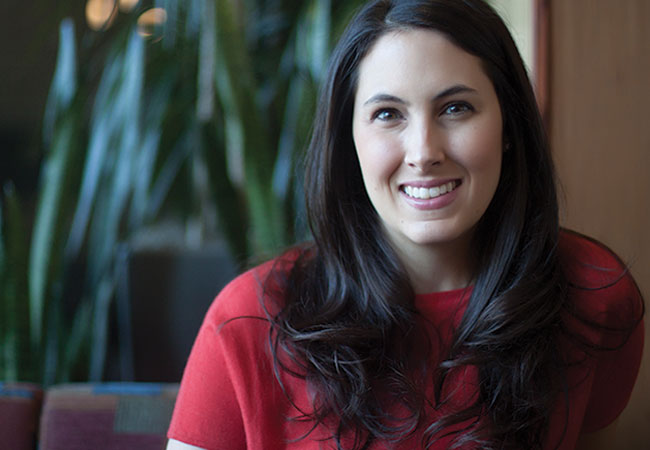901 Tower Drive • Suite 420 •
Troy, Michigan 48098
• P: 248.269.1122 •
E: bianchipr@bianchipr.com
901 Tower Drive • Suite 420 •
Troy, Michigan 48098
• P: 248.269.1122 •
E: bianchipr@bianchipr.com

Most PR practitioners have asked some version of this question at some point in their career. Moving beyond the traditional who, what, where, when, how and why, we focus on this question when we’re working to really engage a key reporter to generate that special story for a client.
This is part of the reason we created our Meet the Media blog series. Now our most popular series, we pose questions to journalists to help PR folks like us better understand journalist needs.
In this post, we’ve pulled some excerpts from our more than 100 Meet the Media profiles to help answer the vital question: what do journalists want?
So, straight from journalists’ mouths, here are five elements of an engaging story:
Consider this response from Kalea Hall of The Detroit News: “I see the auto industry through the people. I want to write stories that thoroughly explain what’s going on and how it impacts them.”
Or this comment from Nora Naughton, formerly of The Detroit News and now with the Wall Street Journal: “… I also think that every aspect of the American automotive industry touches so many lives, especially in the Detroit area, so I’m always looking for that intersection between business and real people.”
Pro Tip: When putting together a story to pitch, consider what human element you can offer to the reporter. If it’s a company anniversary story, perhaps there’s an employee who’s been with the company since the beginning that you can incorporate through quotes or interviews. If it’s a new product or technology, is there an engineer that can speak about some of the challenges or successes in bringing this product to market?
2. Non-promotional Insight with a Reader Takeaway
Consider this response from Elizabeth Engler Modic of GIE Media’s Manufacturing Group that produces Today’s Motor Vehicles and Today’s eMobility: “Interesting insightful articles that aren’t commercials! I want to provide our subscribers with information to improve the efficiency of the products they produce, introduce them to the latest technologies and materials to consider, and the benefits achievable by investing and staying ahead of the competition.”
Or this response from Brad Kuvin at MetalForming & 3D Metal Printing: “I’ve spent my career focused on the idea that our stories should help our readers perform their jobs better. That’s about as basic and simplistic as it gets, but I find that if I follow that guiding principle, everything else falls into place.”
Pro Tip: Be like Anna Zeck of 10 Missions Media (which produces FenderBender, Rachet+Wrench and other automotive journals) and ask yourself, “What can the reader learn from this? What is the takeaway?” Focus on creative, unique stories from which others can learn.
3. Conflict
Consider this response from Don Loepp, editor of Plastics News: “In journalism school, I learned that conflict was important to a good story. I don’t think it’s always necessary, but it helps.”
And this response from Ben Klayman of Reuters: “The best stories have a built-in tension or conflict of some sort. Something counter-intuitive or not disclosed yet.”
Pro Tip: When used in the proper situation and in the right tone, conflict can be a key driver for a compelling story. When considering this approach, be sure to brainstorm the various angles and audiences affected when suggesting a conflict and plan your approach accordingly.
4. Timeliness
Consider this response from Madeleine Winer of Tire Review: “I have a background in newspaper journalism, so timeliness is always an element that hooks me into a story. I also look for innovation, a strong character and impact.”
Or this bit of insight from Tanya Gazdik of MediaPost: “I am always on the lookout for what makes a story unique. I also look for timeliness. I like to write about new campaigns before they break so that the info is still fresh.”
Pro Tip: Consider an embargo for the times when you’re able to plan and prepare news (and visuals) in advance.
5. Technical Information
Consider this response from Lee Teschler of Design World: “Solid technical information that engineers will find either interesting or useful, presented without a marketing ulterior motive.”
Or this straightforward response from Mike Millikin of Green Car Congress: “I look for hard developments and/or data.”
Pro Tip: When identifying spokespeople for the pitch, have a technical expert prepped and ready to handle media requests. These requests may range from a brief clarification on one statement for a general news reporter to a full interview with an editor of a key technical publication. Having experts prepped and ready to handle either scenario enables your prompt and efficient response to media inquiries.
To see our 100+ profiles of journalists who cover the mobility, automotive and related beats in Detroit, Silicon Valley and around the country, click here.

Author: Adriana Van Duyn
Adriana is an account supervisor at Bianchi PR with 16 years of B2B PR experience representing clients across multiple industries.
You might also be interested in:
One Trackback